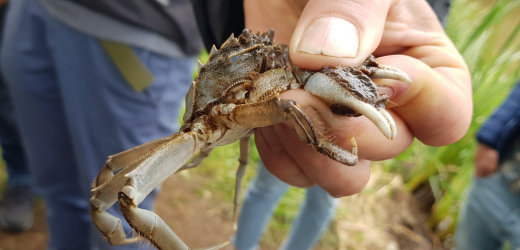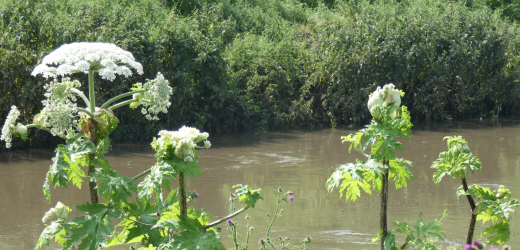
Working together for the return of the European otter
On 1 April 2024, the European project Otter across borders was launched. This project aims to improve the habitat of otters in the border region between Flanders and the Netherlands and is supported by the European Union's Interreg Vlaanderen-Nederland program.
How and why?
Since 2012, the otter has been observed again from time to time in the Scheldt and Meuse Valley. In the Netherlands, the otter is doing well in the North, but the species still has a long way to go in the South. Sixteen parties - from governments to nature associations - are now working to improve, expand and connect the otter's habitats.
The main challenges
- Traffic: up to 30% of otters in the Northern Netherlands are killed every year. Mapping migration routes and reducing infrastructure fragmentation is critical. Otters follow the banks of the watercourse as they move. Consequently, they do not swim under bridges (unlike the beaver which does), but cross the road when they cannot continue 'on foot'. In this way they become the victims of traffic. Therefore dispersal involves providing dry connections under intersecting roads for the otter.
- Wetlands: otters need a large habitat, which means that the restoration of marshes, rivers and riverbanks is essential.
- Food: otters follow a diet which is 90% fish, which means that healthy fish stocks are essential.
- Pollutants: pollutants can seriously damage the otter's health and reproduction.
Solutions
A cross-border corridor is taking shape along the Mark, which will connect the Biesbosch with the Antitankgracht and the Scheldt Valley, and in Dutch and Belgian Limburg via the Kempenbroek. We also focus on improving the habitat in areas such as the Scheldt Valley by restoring marshlands. In addition, we must ensure that otters can move safely through the landscape. Roads and canals will therefore be fragmented. We also want to use the project to increase knowledge about the distribution of otters. Scientists from the INBO will use e-DNA (the e stands for environmental) for this purpose. This technique allows water samples to be tested for the presence or absence of otter DNA. For a species that is shy and does not easily reveal itself, this monitoring technique is very promising. Finally, we are committed to raising awareness among various parties to ensure that, for example, road and watercourse managers pay more attention to the needs of otters.
Goal of the project
To achieve a coherent metapopulation of otters in the Flanders-Netherlands border region, connected to the otter's core range in the North of the Netherlands, Western Germany, Wallonia and Northern France.
Role of VMM
The VMM is working with the municipality of Breda and Water Board Brabantse Delta on a migration corridor for the otter along the Mark river. This corridor should get the otter from South Holland and the Biesbosch to the Antitank Canal and Scheldt Valley and vice versa. This includes projects in urban, natural and agricultural areas.
Project partners
- Flemish government
- Durme NPO
- Equity of the Research Institute for Nature and Forest.
- The municipality of Breda
- Limburg Landscape
- The province of Antwerp
- The province of East Flanders
- Regional Landscape de Voorkempen
- Regional Landscape Kempen and Maasland vzw
- Regional Landscape Rivierenland
- Regional Landscape Scheldt-Durme
- The ARK Foundation
- Flanders Environment Agency
- Water Board Brabantse Delta
- WWF Flanders
- The mammal society
Project details
Status
Ongoing
Duration
01/04/2024 - 31/03/2027
Budget
€3.022.958,05
Funding
Interreg Vlaanderen-Nederland





